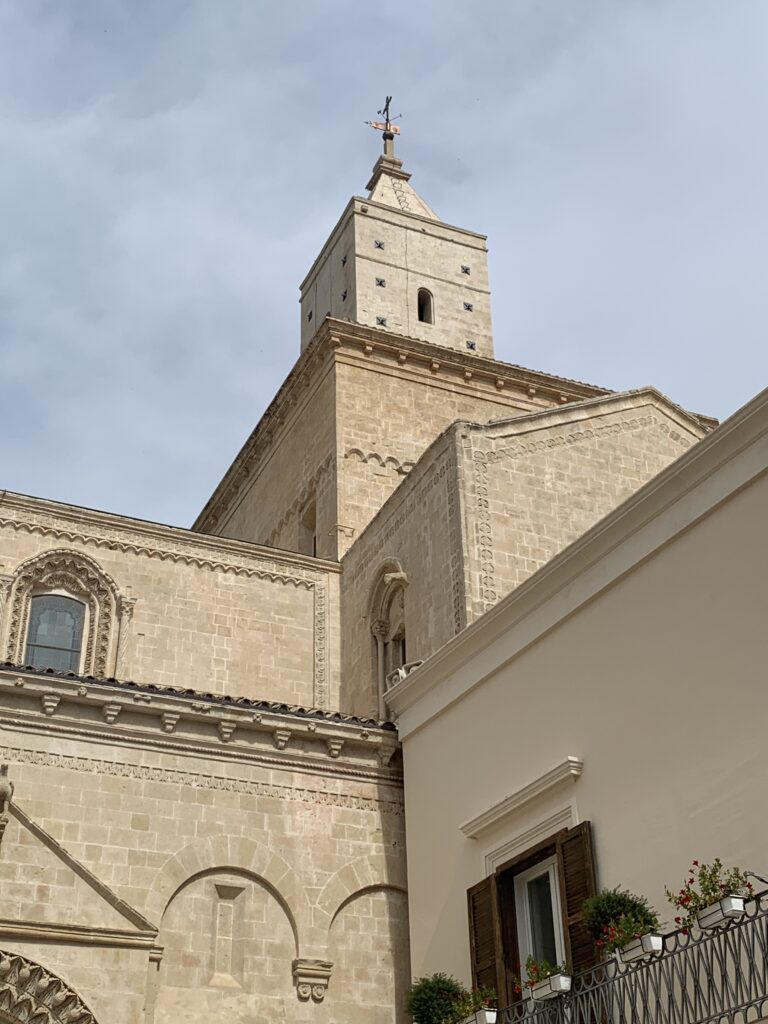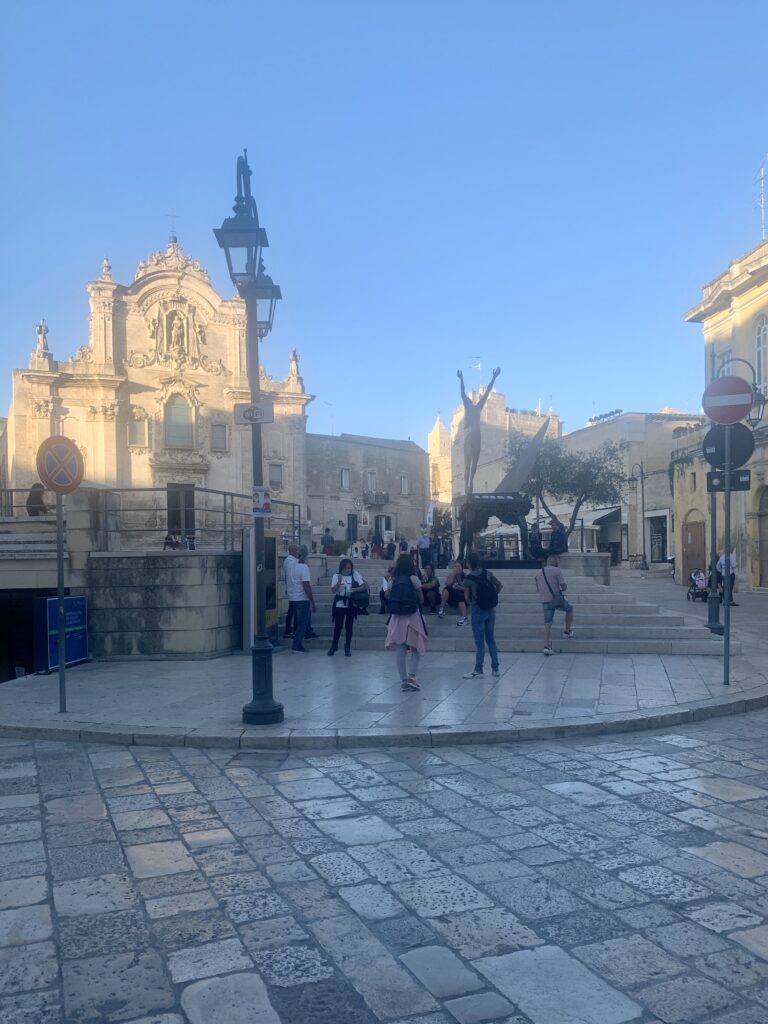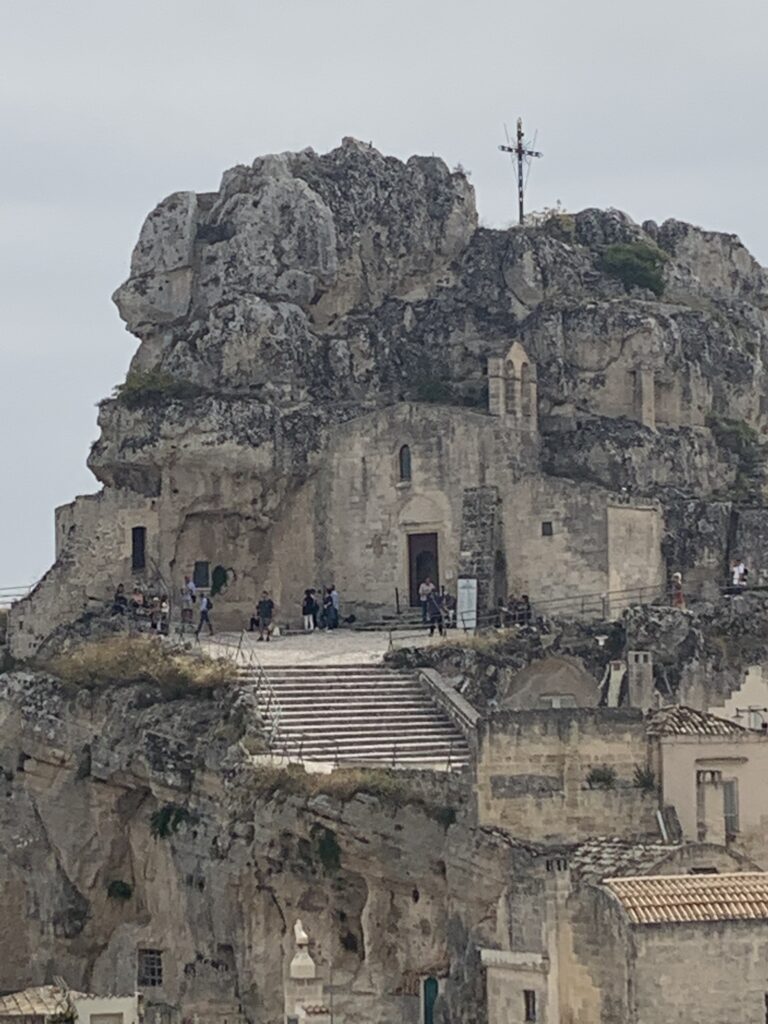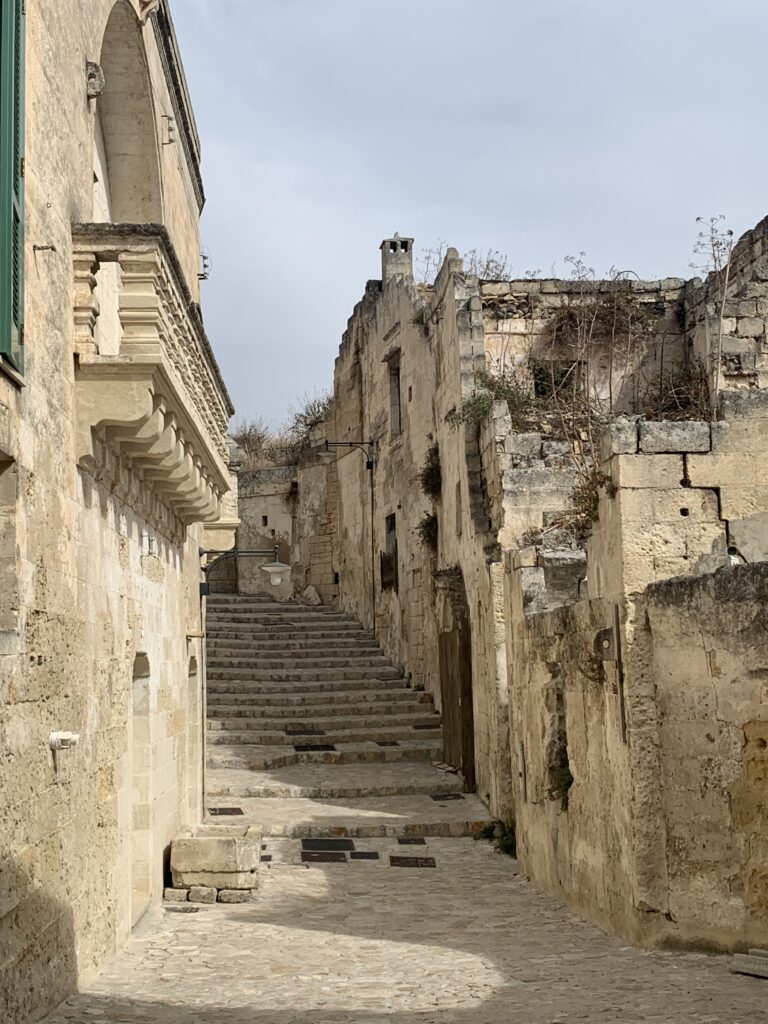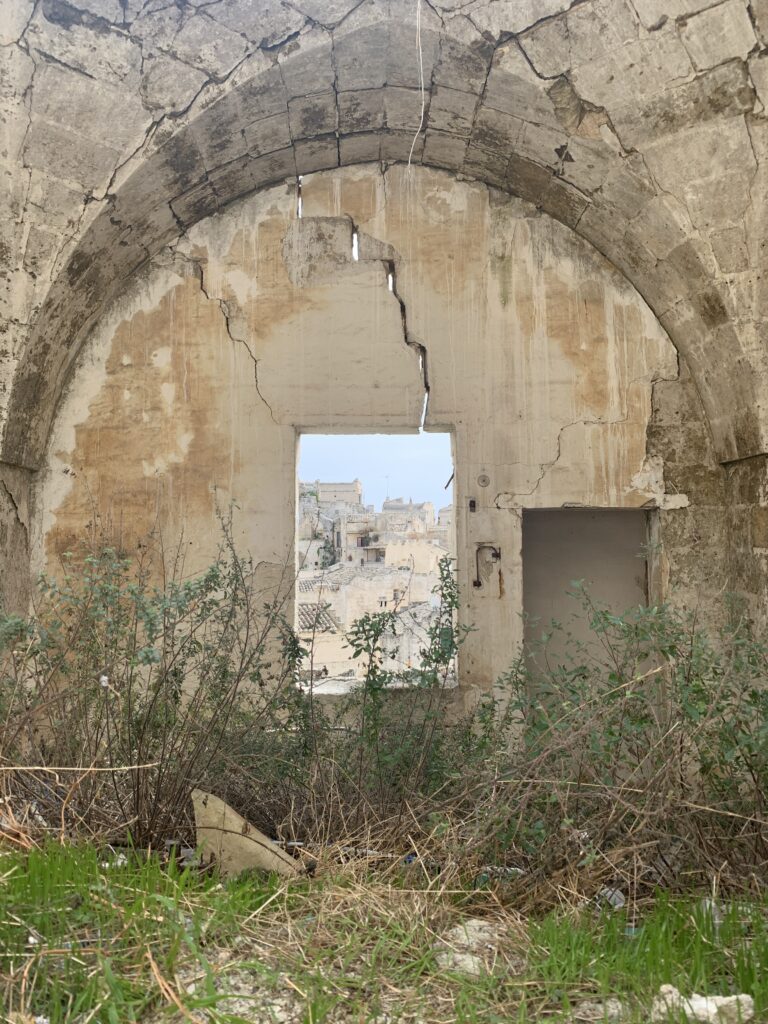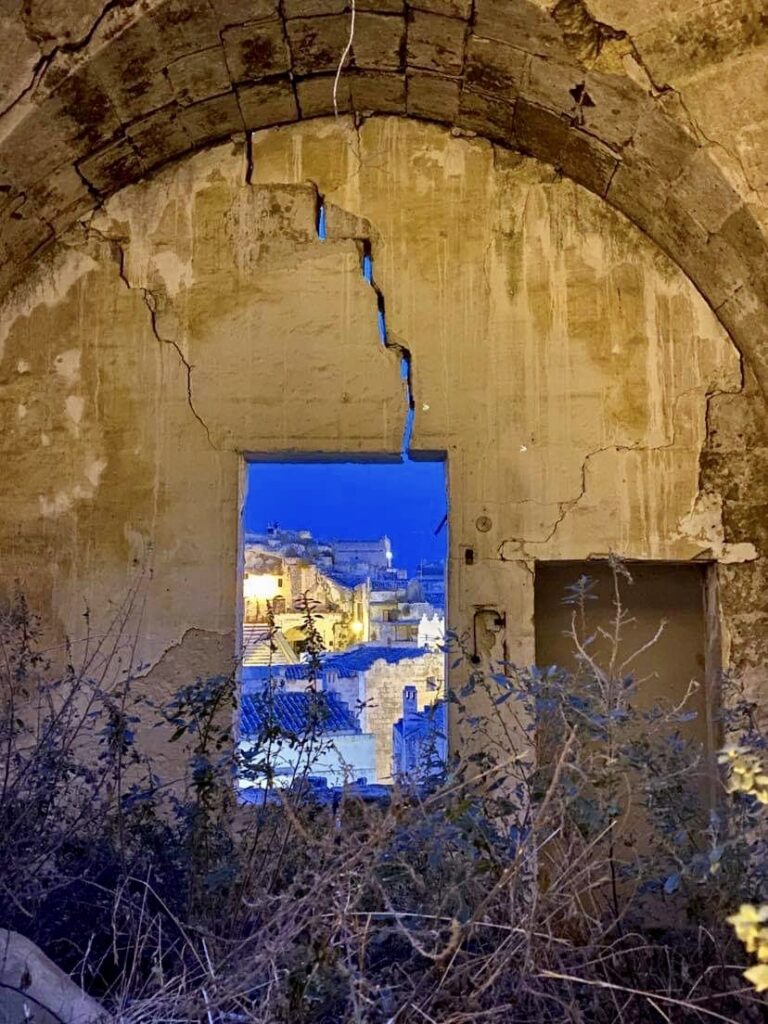Matera has the “wow factor” in spades and is up there with the most special places we have seen in Italy. We were only staying one night but after an initial wander and an evening meal in the centre we simply had to stay on.
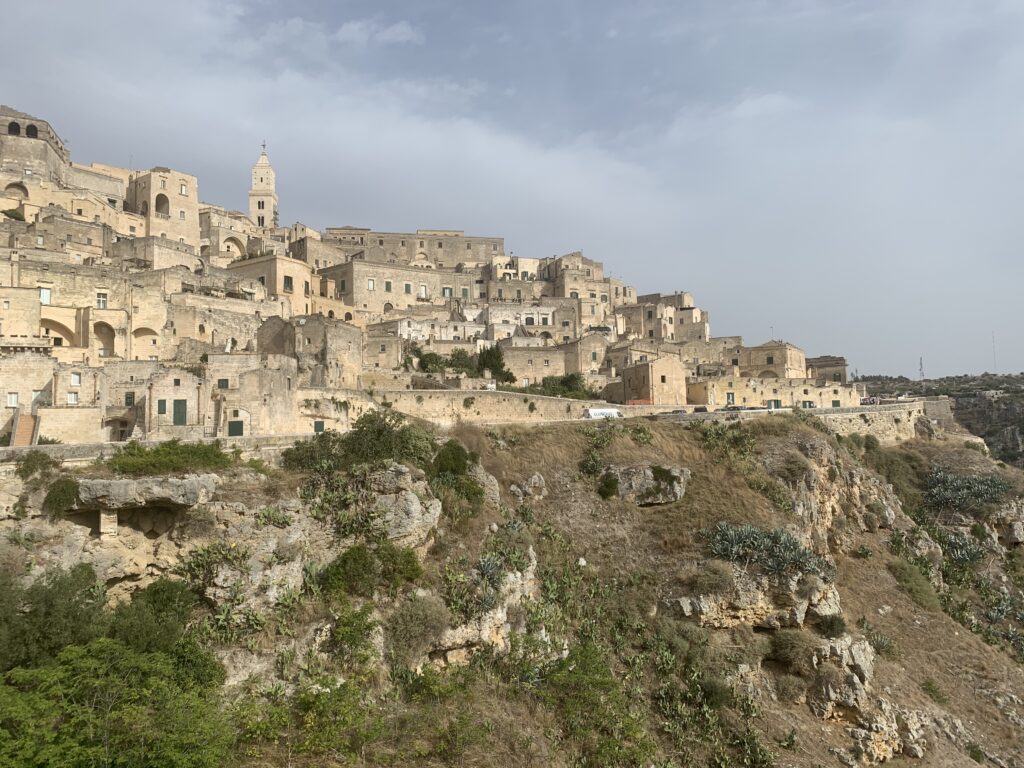
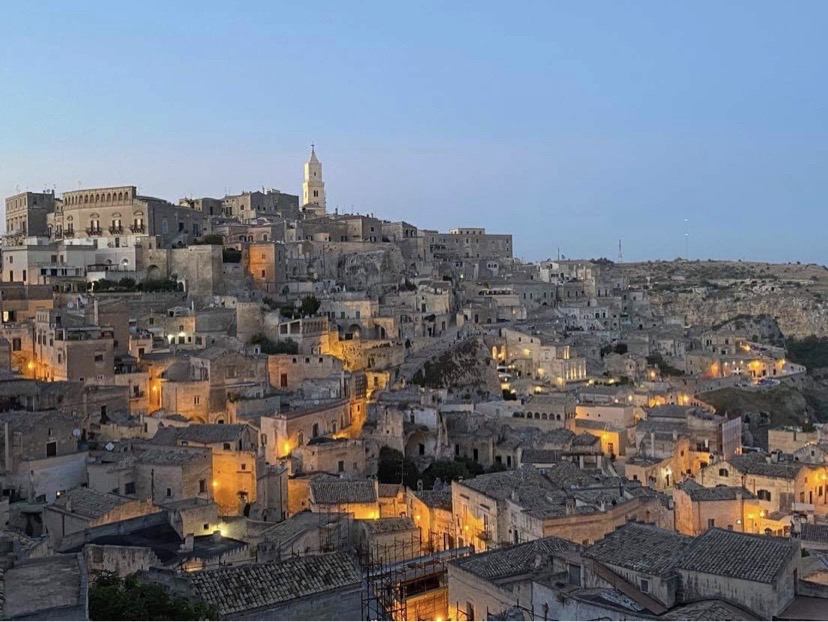
Matera old town has a timeless beauty about it. The colour and the atmosphere of the place changes throughout the day. In the afternoon when the sun is at it’s hottest and the town is eerily quiet with shops and restaurants mostly closed and the streets almost deserted, the almost total silence and the dazzle of the sun reflecting off the limestone buildings seems reminiscent of the holy land some 2,000 years ago. It’s surreal – you are remote and on high, looking down on an ancient time and city. Yet, in the evening, as the city comes alive with families emerging to shop, eat and socialise and; with the increasing sound and; with hundreds if not thousands of small streetlights reflecting off the limestone, the place takes on a pale, cooler more inviting hue that draws you in. There’s a noise and vibrancy about the place. You want to stop and absorb everything but at the same time you want to keep walking so as to see and experience more and; of course, you get sucked deeper into the city – that is when you find the cave houses and start to feel the real atmosphere of the place. That is when you want to know everything about how the people in the cave houses lived; what they ate and drank; how they coped with the heat and the cold; you want to know it all. Vanya booked me on a walking tour of the old town for the next day and it was just what I needed – talk about money well spent!
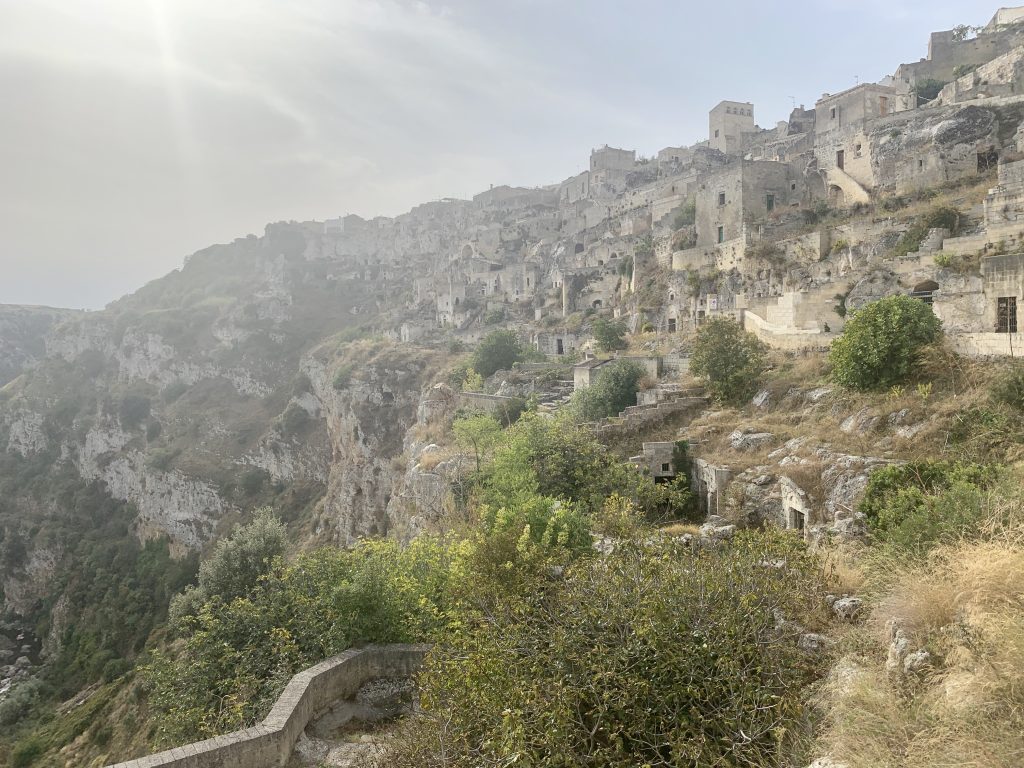
I’ll not go into all the detail but during the 3 hours that my guide, Sarah, walked and talked me around the Civita and the Sassi Caveoso and Sassi Barasano (which areas form the old town) I learned much about the early history of the place and how the people lived and how Matera came to be regarded first as a total embarrassment to Italy and then a World Heritage Site and national treasure. No longer need anyone feel ashamed about the Sassi, least of all the people who lived there.
Matera goes back a long way. It has been described as the world’s third oldest city. I don’t know about that but there is evidence of the numerous natural limestone caves in the Gravina Canyon (which forms one side of Matera) having been continuously inhabited for some 7,000 years and with the Altamura Man having died anything up to 187,000 years ago just 13 miles away, it is distinctly possible.
That said, it was in the Middle Ages that the city we see today started to take shape. In the 13th century the cathedral of Santa Maria della Bruna was built on the ridge high above the Gravina in an area now known as Civita and the people started to build all around the cathedral – the richer nobles in large elegant houses along the top of the ridge and the less fortunate in smaller houses either side of the ridge in what became the Sassi Caveoso (on the steep canyon side) and the Sassi Barasano on the softer side. What we might term the middle class built traditional stone houses on the northwest side of the Civita (the Sassi Barasano) while the poorer classes had to be content with cave houses on the steeper south east edge of the ridge overlooking the Gravina (the Sassi Caveoso). The areas are termed Sassi because most if not all of the properties were constructed entirely from stone and the Italian word for stone is sassi. Over time, the Sassi quite literally grew as individuals living in the original caves around Civita dug deeper into the rock to create more space and shaped the excavated rock into limestone blocks that were used first as facades at the entrances to the caves (for protection from the elements as much as anything) and then to form extensions and build churches, etc and then, in the Caveoso area, the rooves of the existing cave houses became roads and paths as the local people excavated more and more of the rock face to create additional dwellings at every available level of the canyon.
This was never going to be sustainable and as the population of Mantera grew, the Sassi Caveoso in particular became increasingly overcrowded, not least because the steep sides of the Gravina Canyon limited any real expansion and the area soon degenerated into a totally overcrowded and unhygienic slum with large families and any animals they possessed being crammed into the small cave houses. The people of the Sassi Caveoso and, to a lesser extent, the Sassi Barasano were living in the most unthinkable living conditions; malaria was rife and mortality rates, especially amongst children, was spiralling.

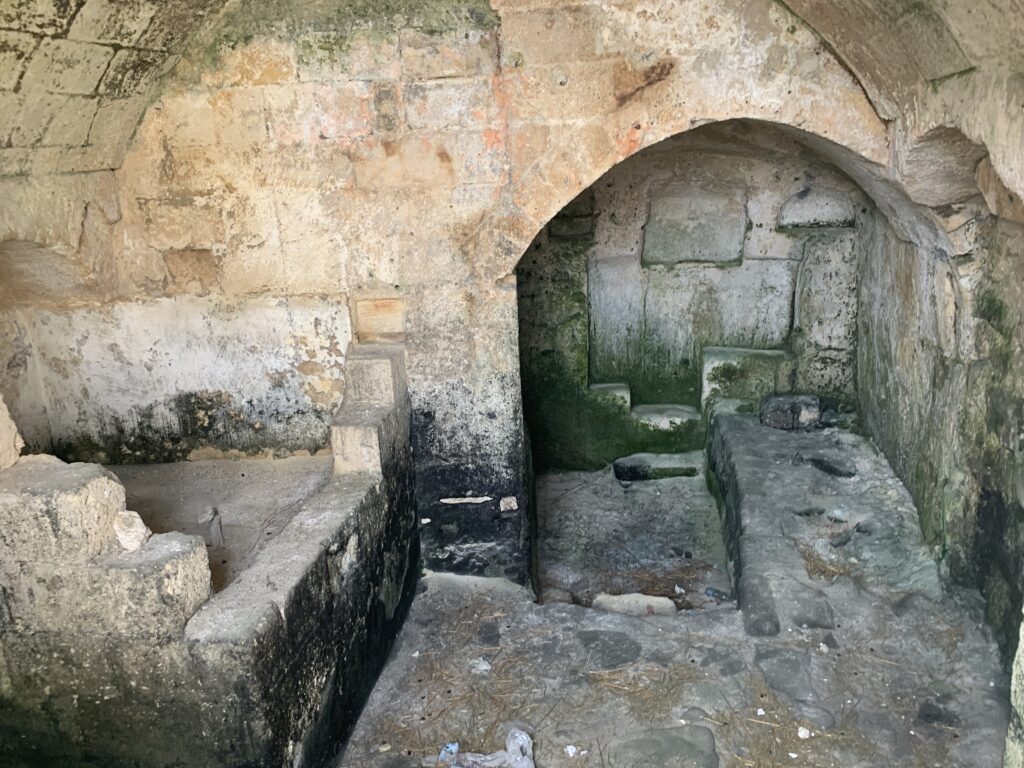
In 1952, after visiting Mantera and witnessing the situation for himself, the Italian Prime Minister, Alcide de Gasperi, was outraged; describing the living conditions as inhuman and a national disgrace – the “shame of Italy”. He instructed that new homes be built and the grottos be emptied and this happened over the ensuing 15 years with everyone being moved out of Sassi Caveoso and parts of Sasso Barasano and the evacuated areas being left to crumble and rot.
The evacuated areas were left idle until certain film makers found the area and started using it as a setting. Pier Paulo Pasolini came first in 1964 when filming “The Gospel According To St Matthew” (he said that in Matera he “found those places and faces that went lost in Palestine”) and some restoration work was begun shortly after the 1985 release of “King David” starring Richard Gere but, it was Mel Gibson’s “The Passion Of Christ” in 2004 which really kick started the Sassi regeneration. There’s talk in Matera of raising a Mel Gibson statue (heaven forbid) because his film is credited with attracting so many more film makers (204 films have been shot at least in part in Matera, including remakes of “The Omen” and “Ben Hur”, the 2008 Bond movie “Quantum of Solace” and the 2017 production of “Wonder Woman”) and these, in turn, have attracted more investment.
Matera has come a long way during the last few years. Film makers continue to arrive (part of the 2020 Bond Movie “No Time To Die” has been filmed here) and tourism is set to become a major feature of the area. Now you can find a whole new town of elegant pedestrian squares filled with restaurants and stylish designer shops sitting alongside the dramatic tangle of stone houses that were the old town. Some of the cave homes have been leased from the government and transformed into classy hotels and trendy cafe bars (there’s even a Michelin listed restaurant) and cave B&B’s and; Matera has been granted UNESCO World Heritage status and more recently recognised as a European Capital of Culture (2019). What is pleasing is that a large part of the Sassi Caveoso is set to be restored and left as a permanent reminder of what once was.
The primary entrance to the Sassi Cavioso is through an arch that is part of the Chiesi San Pietro Caveoso. This is one of the most unusual churches I have seen. It is a very basic church with none of the rich trappings one might ordinarily associate with a Catholic church. It was built to serve the local peasants. The images and sculptures in the church by which the locals could learn of the scriptures (few if any could read or write) were designed and made by the locals themselves (and it is plainly obvious that none were artists)…
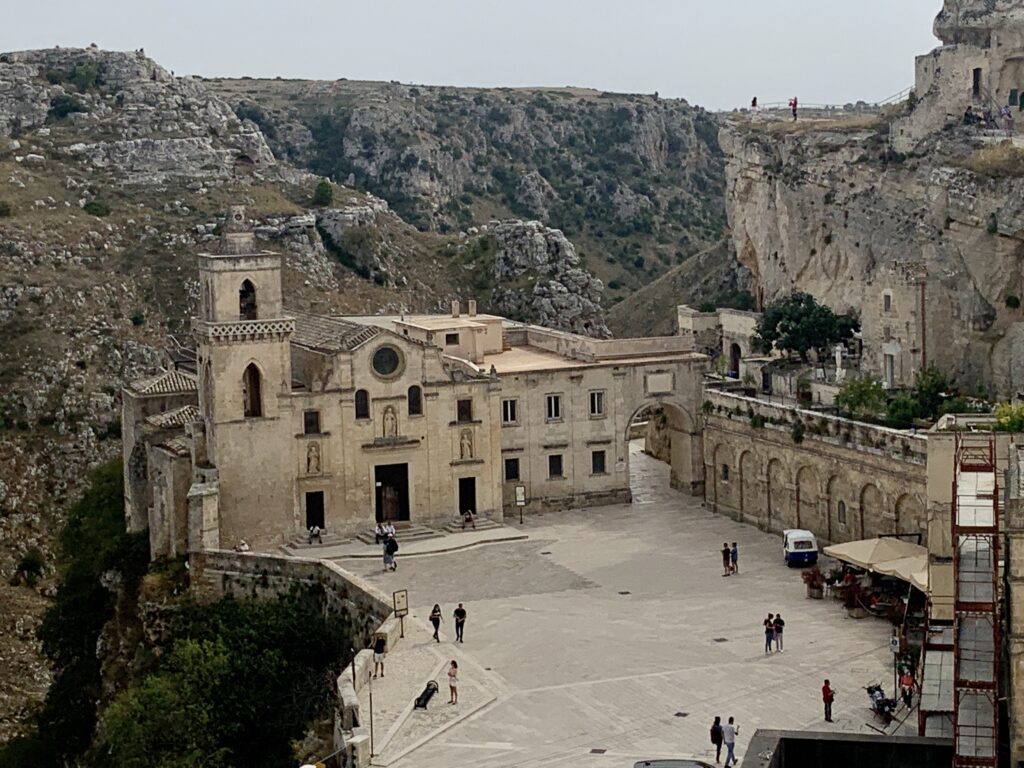
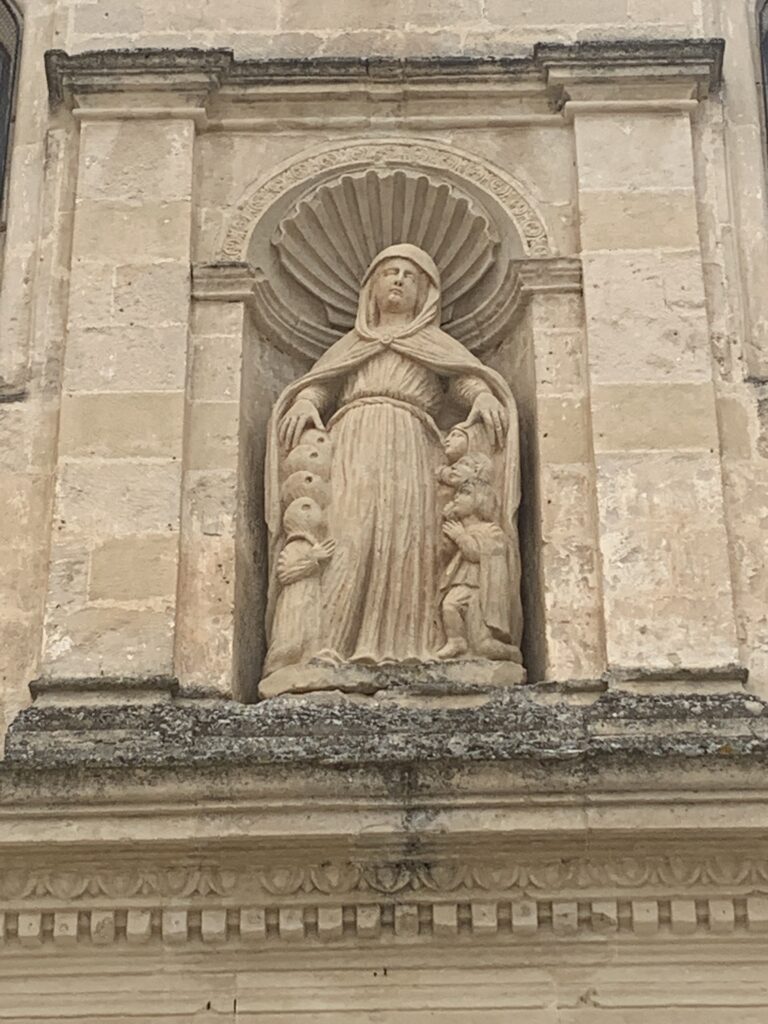
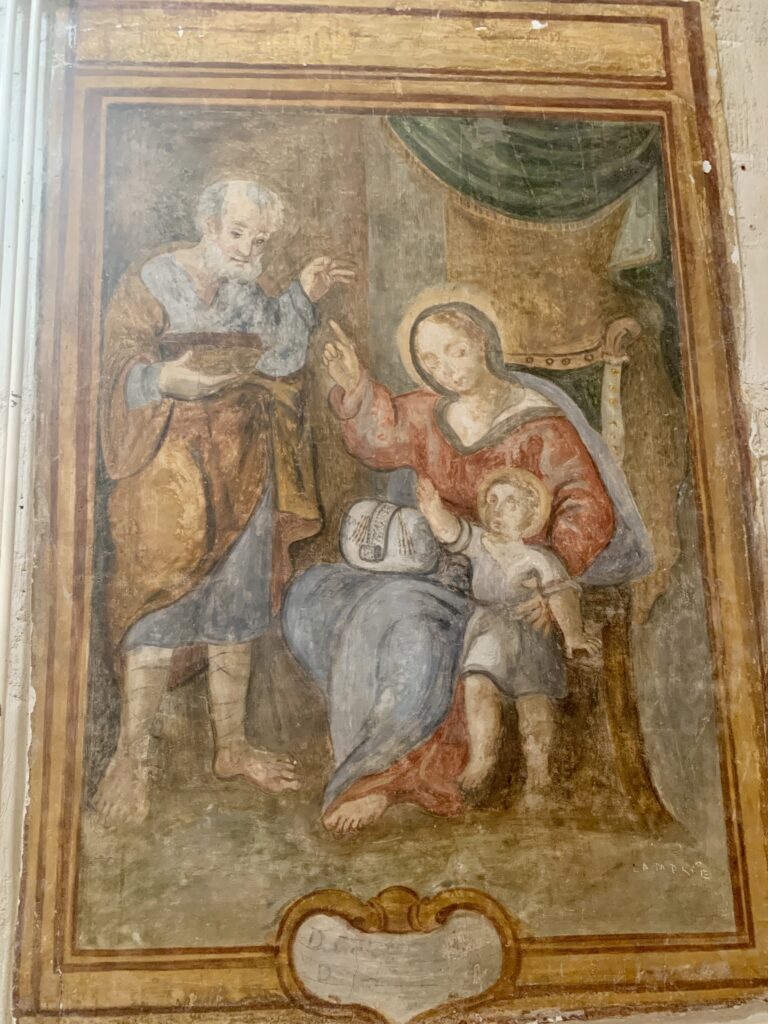
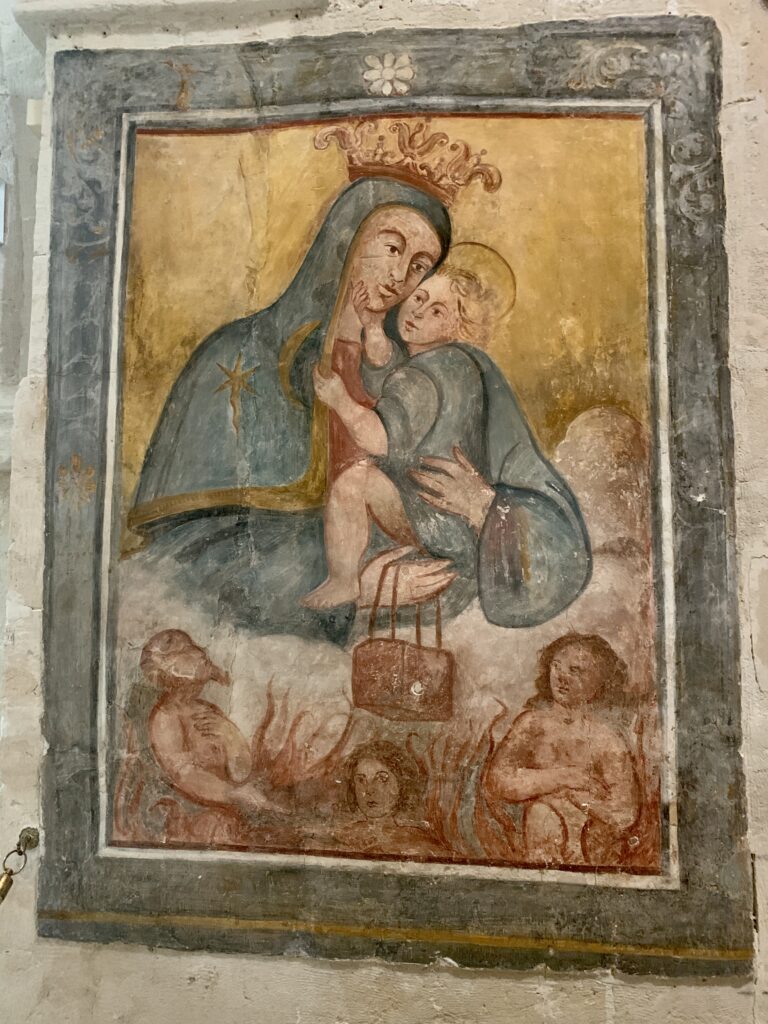
I could go on for hours about this place but, instead, I’ll just add a few more photos which for me capture certain elements of the city:-
